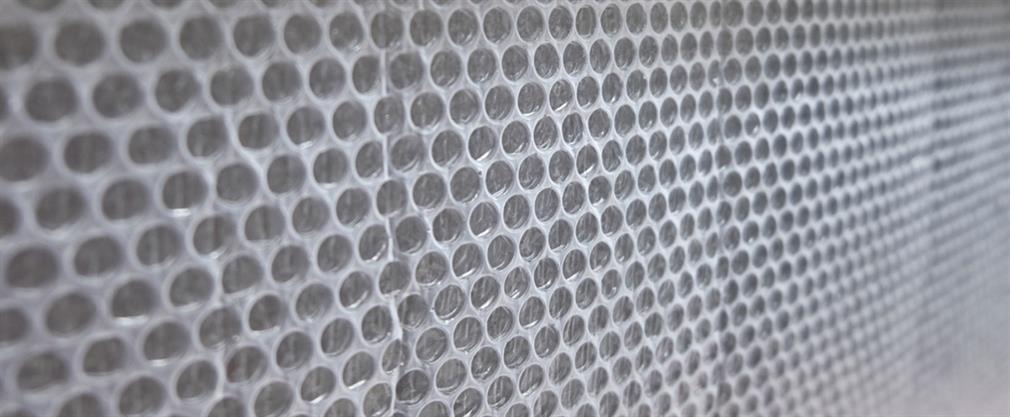How to insulate your greenhouse

As a rule, a greenhouse will extend the garden season by several months. By having a heater inside the greenhouse, you can extend the season even longer and, in some cases, to the entire year. With a heater or a fan, you can heat the greenhouse so you can stay in there, or you can make sure that the temperature never drops below a certain level to avoid damaging your plants. If possible, the greenhouse is the perfect place to have potted plants from the garden and patio to stay in during the winter. However, it requires that you can control the temperature inside the greenhouse.
If you have a fully insulated greenhouse, the temperature will be no problem. Do you have a greenhouse made for the summer with one-layer window panes? You need to insulate during the winter as it will be costly or at least challenging to control the temperature if it gets freezing outside. One way of securing your plants is to place them inside our winter protection plant tents. Here, the space is limited and therefore, it is easier to control the temperature. Place the winter protection tents inside the greenhouse, and you should be safe. Here we like to stress that you need to find out which kinds of plants you have and how to handle them. Some plants are very hardy, while others must be treated very delicately. In a large greenhouse, you can even have different zones for different plants, so all the plants are kept at an optimal temperature at all times.
How to insulate a greenhouse
As we have customers from all over Europe and beyond, we cannot tell everyone the same regarding climate and temperatures during the garden season and more. We are confident that you, as a garden owner, have all the knowledge you need about the seasons you live in. If you have cold winters with temperatures below zero, you could maybe use a few tips about insulating your greenhouse. If you do not have plants inside your greenhouse during winter but use it for, e.g. storing garden furniture, you need not read on.
Having an insulated greenhouse will provide you with a place for all the plants which do not agree with cold temperatures or are sensitive to frost. At the same time, an insulated greenhouse will need far less energy to be heated, and you can save money on the bill and emit far less CO2. You can put up the insulation inside the greenhouse depending on the greenhouse's size or insulate it from the outside. When you insulate, please find out whether the plants are getting enough natural light during the winter. Some plants may hibernate and do not need water or light, while others may need a little of both. You can put up artificial light connected to a timer inside the greenhouse if you isolate the greenhouse with a material that shuts out the natural light.
A little warning: insulating your greenhouse with bubble wrap or similar is not done for the way it looks! It looks like a giant package, but it is affordable and effective. Put it up in a way that allows you to take it down in the spring so you can save it and use it again the following winter. That way, you can save money and avoid creating even more trash. If you use dark material for insulation, you may also use it for shade during the summer. Several greenhouses have special hooks to be attached to the frame – in some cases; these hooks can be used to attach the insulating material. You can also use double-sided tape.
Materials for insulation a greenhouse
You can use various materials when insulating a greenhouse. We know many of the insulating materials from our houses – materials with low thermal conductivity – the so-called U-value. The most common synthetic insulation material is styrofoam or polystyrene boards. Another material is mineral wool. You can also have more natural materials like cork or cardboard. All of these materials will block out the light entirely, so you will need artificial light inside the greenhouse if your plants require sunlight during the winter, as most of them, to some extent, probably will.
That brings us back to bubble wrap as it will insulate and, at the same time, let in light so the vital photosynthesis can take place. This you can place inside or outside, whatever makes sense following the greenhouse size and more. However, wrapping the greenhouse in bubble plastic from the outside will require a lot of fastening as it will blow off very easy if there is a storm. You can buy bubble wrap film in large rolls, so it is easy to handle when you attach it to the greenhouse. Cut the bubble wrap in sections matching the panels inside the greenhouse and ensure that the plastic overlaps as the whole idea of insulating are gone if the insulation is not closed tightly. The air-filled material in the bubbles will create the insulation, so make sure that you get bubble wrap with large bubbles if possible. We recommend that you find bubble wrap in a thickness of no less than 80 my or μ. If you can get bubble wrap with a high UV-resistance, it will last longer – several years if you handle it carefully when putting it up and taking it down.
- Talk with an Expert 82 880 111
- Chat with an Expert
- Get a call from an Expert
- Buy now


























